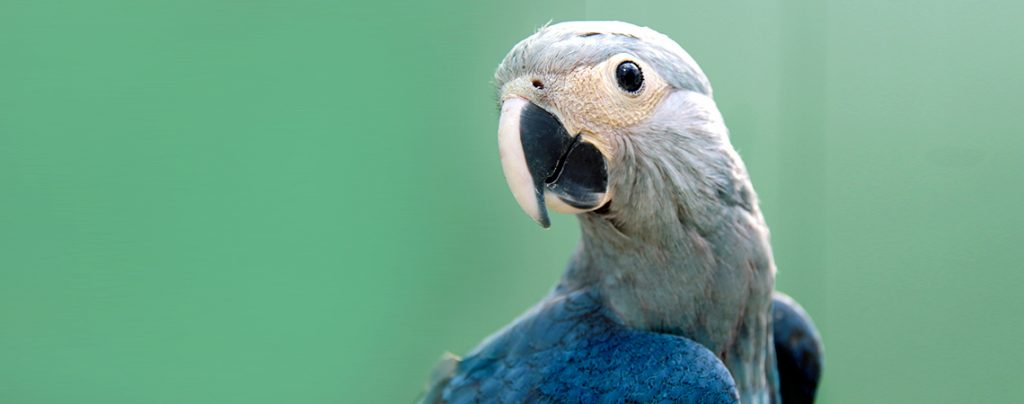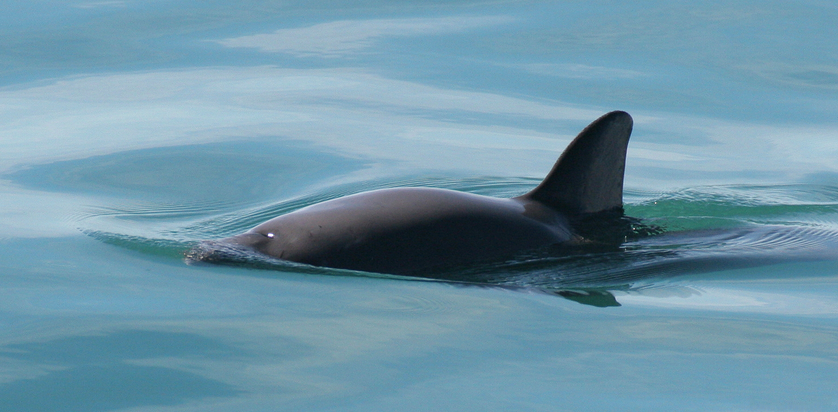
Earth is losing wildlife at an alarming pace, a crisis many scientists now describe as a mass extinction event. The planet has seen several mass extinctions before, but this is the first in human history — and the first with human help. Species declared extinct are increasing rapidly.
Wild plants and animals are vanishing amid a storm of human-induced disasters, namely habitat loss, unsustainable hunting, invasive species, pollution and climate change.
Extinction is a natural part of evolution, but what’s happening now is not normal. As scientists calculated in a 2015 study, the average rate of extinctions over the past century is now 114 times higher than the historical “background” extinction rate.
These species represent unique evolutionary legacies that may be lost forever, sometimes before we can glean valuable insights from them.
They may play vital roles in their ecosystems, for example, or contain biological secrets that could inspire new medications or technologies.
And even if they don’t seem to benefit humans directly, they’re still worth saving for posterity’s sake if nothing else.
As a reminder this isn’t a faceless phenomenon — and in hopes of rallying more support for species that are still with us — here’s a closer look at some species that were declared extinct in the past year, plus a few to watch in the year ahead:
Extinct animals

t’s always hard to be sure a species is truly extinct, given the possibility of survivors hiding out in some undiscovered enclave.
Yet based on what we know about a species’ last sighting, historical range, habitat needs and other factors, scientists can estimate the likelihood that it has been wiped out.
In a 2018 study, for example, a team of researchers used a combination of methods to examine dozens of highly endangered bird species. They determined three should be reclassified as extinct.
One is the poʻouli (Melamprosops phaeosoma), also known as the black-faced honeycreeper, a Hawaiian songbird endemic to Maui that was the only known member of its genus. None have been seen in the wild since 2004 — the same year the last captive poʻouli passed away.

The other two are both forest-dwelling birds from Brazil: the cryptic treehunter (Cichlocolaptes mazarbarnetti) and Alagoas foliage-gleaner (Philydor novaesi).
No cryptic treehunters have been seen since 2007, and although a few Alagoas foliage-gleaners were found in the wild as recently as 2008, the last confirmed sighting was in 2011, according to the International Union for Conservation of Nature (IUCN).

The study also identified other species that should be reclassified as “Critically Endangered (Possibly Extinct),” a category for species that are highly likely to be extinct, yet warrant more searching before being formally written off.
These include the New Caledonian lorikeet (last seen in 1987), Javan lapwing (1994), Pernambuco pygmy owl (2001) and glaucous macaw (1998).
And the Spix’s macaw, made famous by the 2011 film “Rio,” should be reclassified as Extinct in the Wild, the study found, as the species’ only survivors appear to be 60 to 80 living in captivity.
In December, the U.S. Fish and Wildlife Service (FWS) announced the Ozark pyrg, a small snail native to Arkansas and Missouri, is “presumed extinct.”
Despite rigorous scientific surveys, no Ozark pyrgs have been confirmed since the species was discovered in 1915, when it was found in the White River near Cotter, Arkansas, and in the North Fork White River near Norfork, Arkansas, extending into Missouri.
Dams
“The Norfork Dam and Beaver Fork Dam, both constructed in the 1940s, were built just upstream of the original collection points,” the FWS explains. “The damming of the White and Norfork rivers drastically changed the habitat of the area.
The snail likely required shallow, flowing water and clean gravel to survive and reproduce, and this habitat was destroyed or reduced above and below the dams.”
And on New Year’s Day 2019, another U.S. snail species also faded away. George, the last survivor from the Hawaiian land-snail species Achatinella apexfulva, died Jan. 1 at roughly 14 years old.
A. apexfulva was the first of more than 750 species of land snails from the Hawaiian Islands described in western science, according to a press release from the Hawaii Department of Land and Natural Resources (DLNR).
It was once common on Oahu, but like many native Hawaiian snails, it fell victim to invasive predators such as rats, Jackson’s chameleons and rosy wolfsnails, a species native to Florida that has already driven eight other Hawaiian snail species to extinction.
In 1997, the last 10 known members of A. apexfulva were brought to a laboratory at the University of Hawaii for a last-resort captive-breeding program.
Subscribe for our Newsletter
They did produce some offspring, but all the snails eventually died — except George. Although George and his species are now gone, a 2-millimeter snippet of George’s foot was collected in 2017 for research purposes, according to the DLNR, and this tissue remains alive in a deep-freeze container at the San Diego Zoo’s Frozen Zoo.
Extinct plants

Public attention tends to be even more elusive for endangered plants, several of which were declared extinct in 2018. As the Revelator’s John Platt has reported, for example, an Algerian flowering shrub known only by its scientific name, Adenocarpus faurei, was declared extinct after a five-year search found no signs of the species.
It was a victim of habitat degradation, researchers reported, noting that its fate may be shared by many other rare and endemic plants in the region.
In Cameroon’s Bali Ngemba Forest Reserve, another rare plant species was identified by an August 2018 study — and immediately classified as possibly extinct.
The tree is known only from specimens collected in 1951 at Bali Ngemba, but wasn’t identified as a distinct species until researchers examined those specimens with molecular phylogenetic studies, as Platt reported.
Although they still hope survivors will be found, the study’s authors note Vepris bali may already be extinct due to “tree cutting and agricultural incursions” into its limited cloud forest habitat.
And back in Hawaii, a native herb named Amaranthus brownii also joined the ranks of extinct species on the IUCN Red List.
A member of the amaranth family, it was endemic to the tiny island of Nihoa in the Northwestern Hawaiian Islands, which has a total area of just 0.65 square kilometers (0.25 square miles).
Like many threatened species in Hawaii — known as the “extinction capital of the world” — it faced pressure from invasive species, including other plants as well as introduced grasshoppers, as biologist David Steen notes in his annual roundup of extinct species.
On the bubble

It can be depressing to look back at the decline of an extinct species, and it’s often easier to turn a blind eye than to confront the sad reality. So why bother memorializing plants and animals that are most likely already gone?
In some cases, they may still have a few survivors out there, and declaring them as “possibly extinct” could help draw attention to their plight.
But on top of that, even for species whose extinction is more certain, their tragic tales can serve as a call to action for conserving endangered species still clinging to existence.
And so, if there’s any silver lining to this kind of loss, it’s the hope that it might buffer other creatures from meeting a similar fate. One high-profile example is the vaquita, a porpoise from the Gulf of California whose population has plummeted by 92 percent since the late 1990s.
Roughly 100 vaquitas were left as recently as 2014, but that total had fallen to just 60 in 2016, and as of 2017 the species’ entire population was estimated to be about 30.
Its decline is a result of illegal gill-net fishing, which tends to kill vaquita as bycatch while targeting a different endangered species, a fish called totoaba, whose swim bladders are prized in China.

Other examples abound. The northern white rhino is a subspecies on the brink of extinction, for instance, while both the Javan and Sumatran rhino species are also dangerously close to oblivion.
As Steen points out, the Yangtze giant softshell is a rare turtle species with just four known members left, only two of which live in the wild.
In Bolivia, a frog named Romeo is one of the last Sehuencas water frogs on Earth. And in Hawaii, there is a wealth of native species that desperately need protection, from forest birds and freshwater snails to a dizzying list of dwindling plants.
There are too many species at risk of extinction to list here, which can be seen as a good or a bad thing. Too many species are on the verge of disappearing forever, illustrating the extensive damage our own species has wrought on the ecosystems that sustain us.
At the same time, however, each of those struggling species represents an opportunity for us to atone for past mistakes, prove that humans can be good stewards of wildlife and preserve our natural heritage for future generations.
It won’t be easy to undo the damage already wrought by mass extinctions, but thankfully we still have time to intervene before things get even worse.
To learn more about plants and animals whose futures are in serious jeopardy, see the IUCN’s list of Critically Endangered species.
Source: MotherNatureNetwork
Written by: RUSSELL MCLENDON





